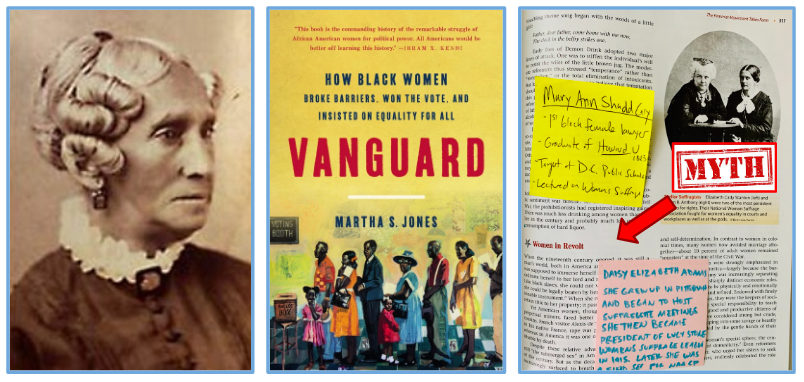TOPIC 4.11 An Age of Reform
The Myth of Seneca Falls and the Whitewashing of the Suffrage Movement
KC-4.1.III.C A women’s rights movement sought to create greater equality and opportunities for women, expressing its ideals at the Seneca Falls Convention
Objective: Students will modify the standard class text’s section on the origins of the suffrage movement by inserting missing contributions of the original African American feminists.
This key concept in an Antiracist classroom:
“Shall I, for fear of scoffs and frowns, refrain my tongue? Ah, no!” - Maria Stewart
African American women clearly laid the foundations of American feminism, yet American history textbooks highlight the work of white women, especially, Elizabeth Cady Stanton and Susan B. Anthony, as the most significant aspects of the women’s liberation movement. The APUSH curriculum’s version of events leads students through the struggles of Stanton and Anthony, starting at Seneca Falls, into the development of NAWSA, and finally culminates with the 19th Amendment.
However, the first recorded American feminist was an African American woman named Maria (pronounced like “Mariah,” as in the 90’s pop star) Stewart. As an African American, her speeches never separated the women’s cause with the cause of racial equality. She was the first woman in American history to ever give lectures in front of men. She did so 15 years before Seneca Falls. When APUSH textbooks list the issues that spurred the women’s rights movement, property rights, lack of opportunities in higher education, and inheritance issues are always mentioned. Typically unmentioned is the fact that 2 million American women also lived in constant fear of being legally raped and having their young children sold away from them.
Also unmentioned in APUSH texts is that NAWSA became a segregating force in the liberation movement, and was only formed after Elizabeth Cady Stanton directed a racist rant towards Frederick Douglass and left the biracial liberation group (AERA) to which they had both belonged. Ending the story of women’s liberation with the 19th Amendment is also problematic. The dominance of Jim Crow continued for decades after ratification of the 19th so the majority of African American women did not earn the right to vote for another 40 years with the passage of the Voting Rights Act of 1965.
Notes
I have had great feedback on this lesson. It seems simple, but at the end of the year, I always have a few students comment that making the sticky notes and adding them to the textbook was one of their most memorable lessons.

